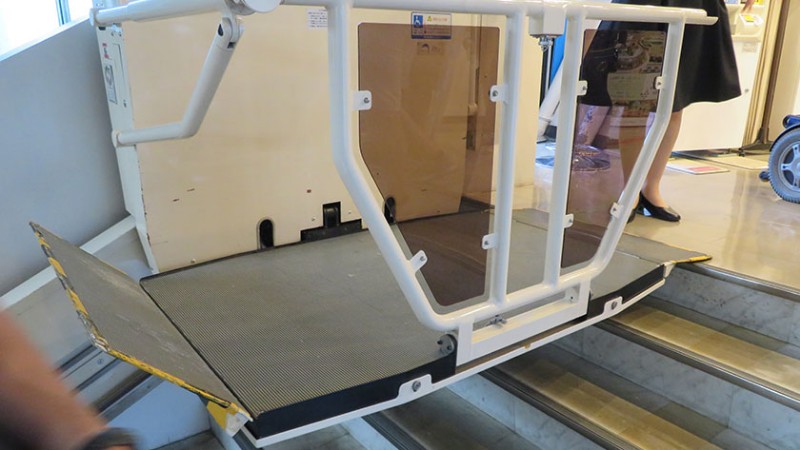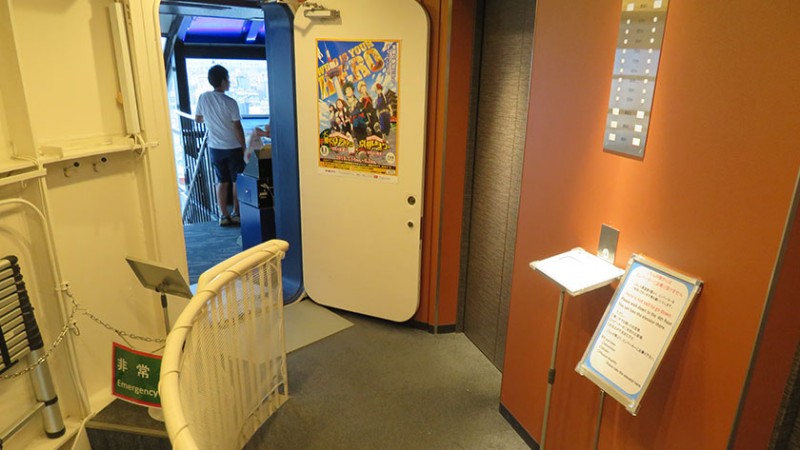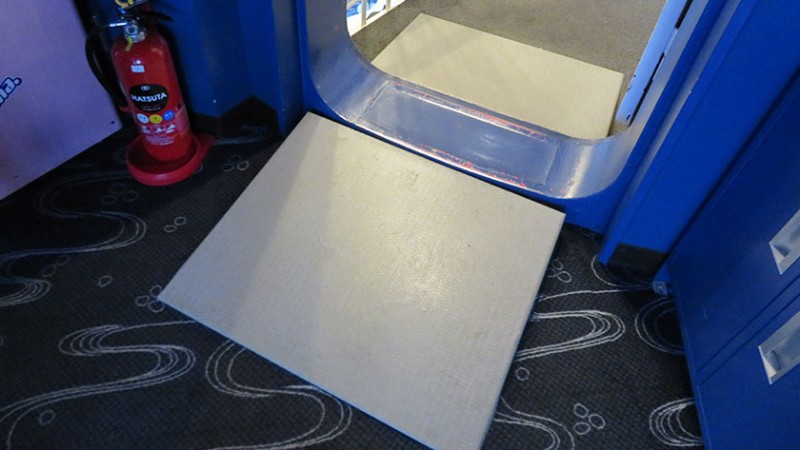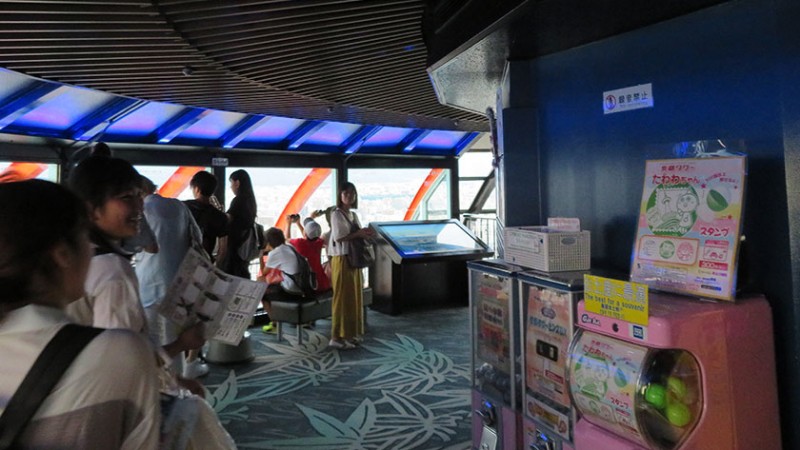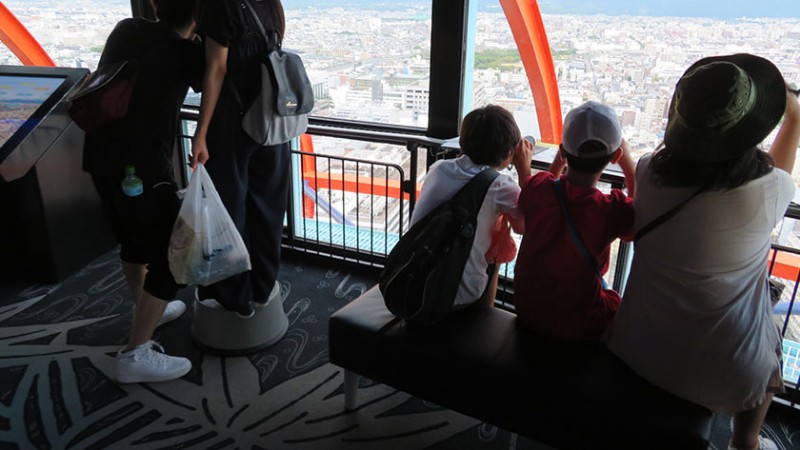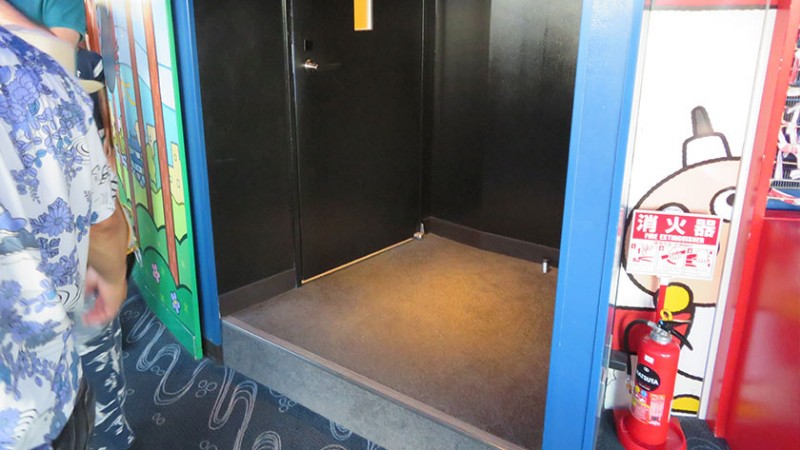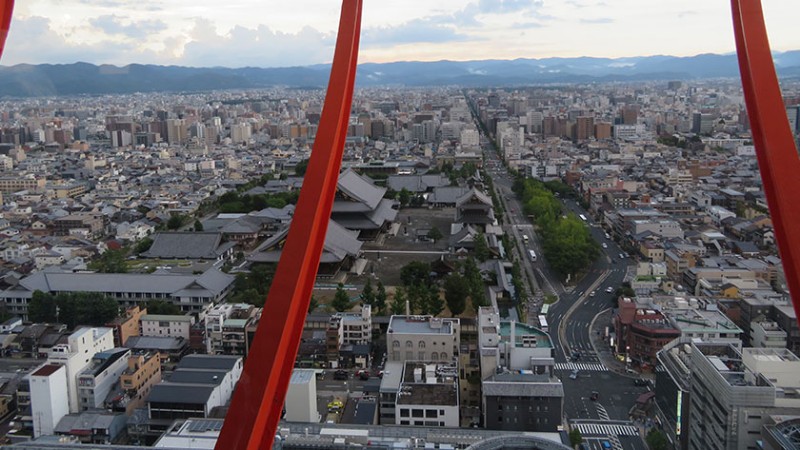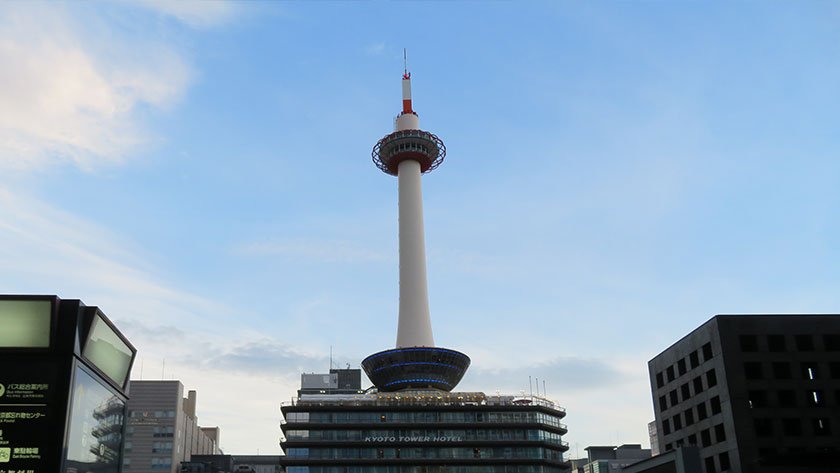
Kyoto Tower offers views of the ancient capital that are worth seeing and adaptations to the old building have made it relatively wheelchair accessible.
Background Information
Kyoto Tower was planned to be constructed and completed in time for the 1964 Summer Olympics in Tokyo, but was completed closer to the end of 1964. While only 131 meters tall, due to rules in Kyoto that limit the height of buildings, it is the tallest structure in the city.
Kyoto Tower’s interior is made of steel rings stacked on top of each other and then covered with lightweight steel sheets. The design is meant to resemble a Japanese candle.
The tower is on top of a typical building, and has a viewing platform which offers a 360 degree view of Kyoto and its many temples and shrines. On clear days it is possible to see nearby Osaka.
The observation deck is open daily from 9:00 to 21:00 (entry until 20:40) for 770 yen.
Getting There
Kyoto Tower is just across the street from Kyoto station which is fully accessible.
Accessibility
Considering the age of the tower, it is fairly accessible thanks to some adaptations.
The ticket booth is in the center of the first floor and has a vary narrow line and can get crowded. If you are a wheelchair user and someone else buys the tickets, be sure that they tell the staff there is a wheelchair user in the group so the staff upstairs can prepare.
After riding one of the elevators to the 11th floor, a staff member will greet you when you get off and then direct you to a fairly old stair climber to get up the steps to the second set of elevators.
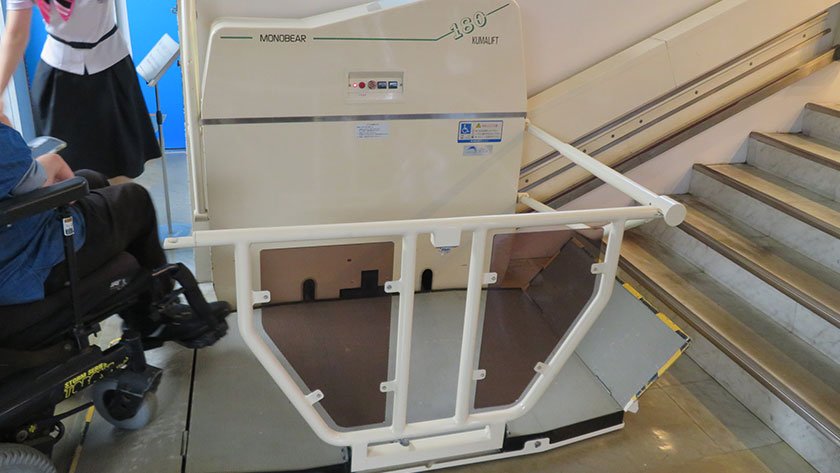
The next set of elevators are a bit small but can accommodate a full-sized wheelchair. However, when getting off at the top floor there is very little room to maneuver and a framed doorway heading to the observation area. Thankfully, the building has added ramps to go through the door, but they are a bit steep.
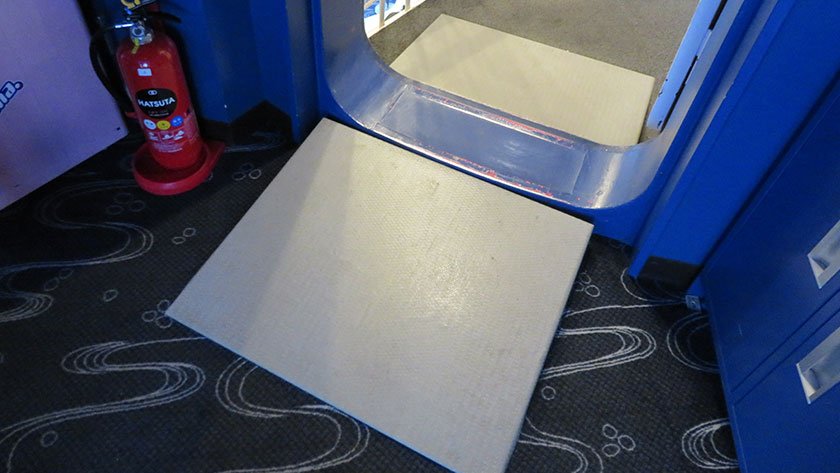
The observation floor has displays and binoculars (which are a bit high for wheelchair users). Unfortunately, the corridor is very narrow and on crowded days may be difficult to traverse. There are benches for those who need to rest.
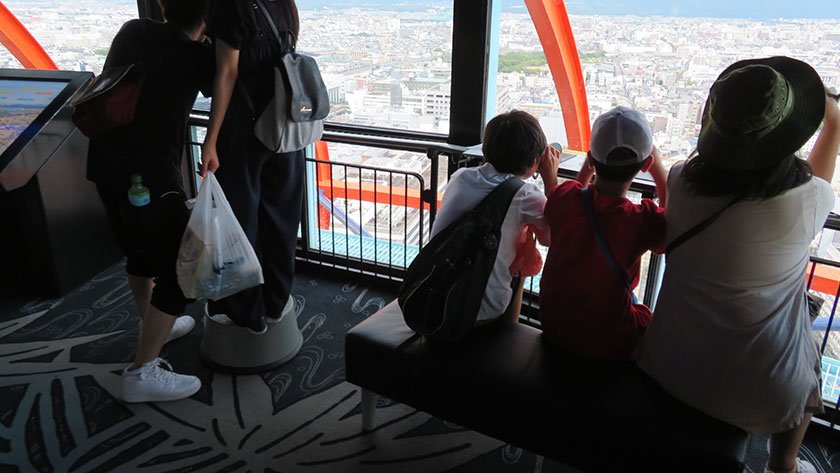
There is a lower level accessible by stairs as well as the elevator. In order to funnel visitors to the paid photo area from the stairs, those who use the elevator will be going against the flow and may find it frustrating and not worth it.
The toilet on top of the tower has a step and is not accessible.
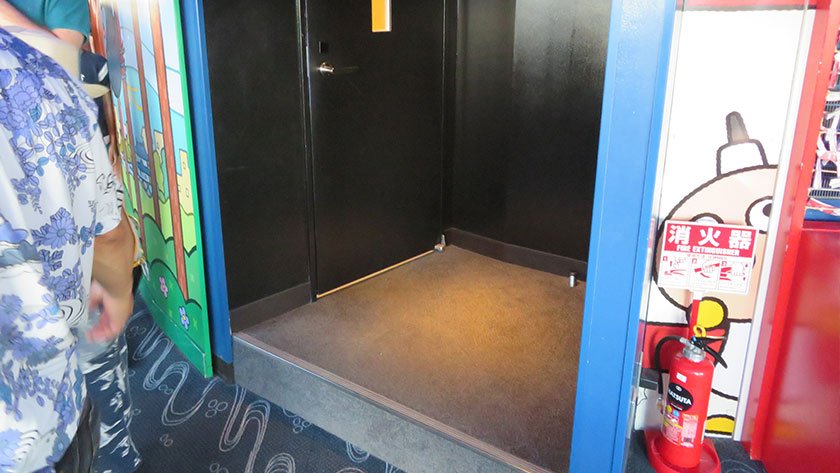
Conclusion
While it would be an unimpressive tower anywhere else, due to zoning laws in Kyoto that keeps buildings low to the ground, Kyoto Tower offers a commanding view of the ancient capital. While not entirely smooth, the adaptations offer a great way to see many of the temples and shrines from a different perspective.




